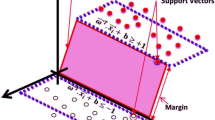Abstract
Objective
Baroreflex sensitivity (BRS) is an important prognostic index in cardiovascular diseases, however, its use is complicated by different methods difficult to compare and standardize, often providing conflicting results. We tested whether the simple ratio of RR interval to systolic blood pressure global variabilities (assessed by standard deviations) is a reliable measure of BRS, by measuring the agreement with six established methods. In addition, we tested whether high-pass filtering of data, by removing slow non-baroreflex-mediated fluctuations, could improve the agreement between different BRS methods.
Methods
In 1,409 subjects, we compared 6 established methods (derived by cross-spectral and sequence analysis) and the new method, supine and in response to tilting (1,175 subjects). Data were analyzed after linear detrending, high-pass filtering at 0.025 and 0.05 Hz.
Results
Although all seven methods showed a general agreement, the new method consistently showed the lowest distance from the median of the remaining methods (0.04 ± 0.06 ms/mmHg over 2,584 files, p < 0.05 with respect to the second best method). High-pass filtering improved (p < 0.001) the agreement between methods without reducing the sensitivity to changes induced by tilting. Only the new method could provide estimates in all 2,584 files tested.
Interpretation
The new method intercepts the mean information of all other methods better than any other method, hence providing a simple, easy to standardize (no mathematical constraints) and yet robust and reliable BRS estimate. High-pass filtering markedly improves the agreement of all methods, without loss of sensitivity, and could be routinely used in clinical trials, to provide comparable BRS estimates.







Similar content being viewed by others
References
La Rovere MT, Bigger JT Jr, Marcus FI, Mortara A, Schwartz PJ (1998) Baroreflex sensitivity and heart-rate variability in prediction of total cardiac mortality after myocardial infarction. ATRAMI (Autonomic Tone and Reflexes After Myocardial Infarction) Investigators. Lancet 351:478–484
Sykora M, Diedler J, Rupp A, Turcani P, Rocco A, Steiner T (2008) Impaired baroreflex sensitivity predicts outcome of acute intracerebral hemorrhage. Crit Care Med 36:3074–3079
Johansson M, Gao SA, Friberg P et al (2007) Baroreflex effectiveness index and baroreflex sensitivity predict all-cause mortality and sudden death in hypertensive patients with chronic renal failure. J Hypertens 25:163–168
Ormezzano O, Cracowski JL, Quesada JL, Pierre H, Mallion JM, Baguet JP (2008) EVAluation of the prognostic value of BARoreflex sensitivity in hypertensive patients: the EVABAR study. J Hypertens 26:1373–1378
Smyth HS, Sleight P, Pickering GW (1969) Reflex regulation of arterial pressure during sleep in man. A quantitative method of assessing baroreflex sensitivity. Circ Res 24:109–121
Laude D, Elghozi JL, Girard A et al (2004) Comparison of various techniques used to estimate spontaneous baroreflex sensitivity (the EuroBaVar study). Am J Physiol (Regul Integr Comp Physiol) 286:R226–R231
Pitzalis MV, Mastropasqua F, Passantino A et al (1998) Comparison between noninvasive indices of baroreceptor sensitivity and the phenylephrine method in post-myocardial infarction patients. Circulation 97:1362–1367
Maestri R, Pinna GD, Mortara A, La Rovere MT, Tavazzi L (1998) Assessing baroreflex sensitivity in post-myocardial infarction patients: comparison of spectral and phenylephrine techniques. J Am Coll Cardiol 31:344–351
Colombo R, Mazzuero G, Spinatonda G et al (1999) Comparison between spectral analysis and the phenylephrine method for the assessment of baroreflex sensitivity in chronic heart failure. Clin Sci (Lond) 97:503–513
Rosengård-Bärlund M, Bernardi L, Fagerudd J et al (2009) Early autonomic dysfunction in type 1 diabetes: a reversible disorder? Diabetologia 52:1164–1172
Bland JM, Altman DG (1986) Statistical methods for assessing agreement between two methods of clinical measurement. Lancet 1:307–310
Bertinieri G, Di Rienzo M, Cavallazzi A, Ferrari AU, Pedotti A, Mancia G (1985) A new approach to analysis of the arterial baroreflex. J Hypertens Suppl 3:S79–S81
Pagani M, Somers V, Furlan R et al (1988) Changes in autonomic regulation induced by physical training in mild hypertension. Hypertension 12:600–610
Pinna GD, Maestri R (2001) Reliability of transfer function estimates in cardiovascular variability analysis. Med Biol Eng Comput 39:338–347
Bland JM, Altman DG (1997) Cronbach’s alpha. Br Med J 314:572
Bravo G, Potvin L (1991) Estimating the reliability of continuous measures with Cronbach’s alpha or the intraclass correlation coefficient: toward the integration of two traditions. J Clin Epidemiol 44:381–390
Mäkinen VP, Forsblom C, Thorn LM et al (2009) Network of clinical and biochemical characteristics in a set of 4,197 patients with type 1 diabetes. Cardiovasc Diabetol 8:54–59
Kohonen T (1990) The self-organizing map. Proc IEEE 78:1464–1480
Mäkinen VP, Forsblom C, Thorn LM et al (2008) Metabolic phenotypes, vascular complications, and premature deaths in a population of 4, 197 patients with type 1 diabetes. Diabetes 57:2480–2487
Ziegler D, Laude D, Akila F, Elghozi JL (2001) Time- and frequency-domain estimation of early diabetic cardiovascular autonomic neuropathy. Clin Auton Res 11:369–376
Saul JP, Berger RD, Albrecht P, Stein SP, Chen MH, Cohen RJ (1991) Transfer function analysis of the circulation: unique insights into cardiovascular regulation. Am J Physiol 261:H1231–H1245
Conflict of interest
The authors declare that they have no conflict of interest in connection with this paper.
Author information
Authors and Affiliations
Corresponding author
Rights and permissions
About this article
Cite this article
Bernardi, L., De Barbieri, G., Rosengård-Bärlund, M. et al. New method to measure and improve consistency of baroreflex sensitivity values. Clin Auton Res 20, 353–361 (2010). https://doi.org/10.1007/s10286-010-0079-1
Received:
Accepted:
Published:
Issue Date:
DOI: https://doi.org/10.1007/s10286-010-0079-1




